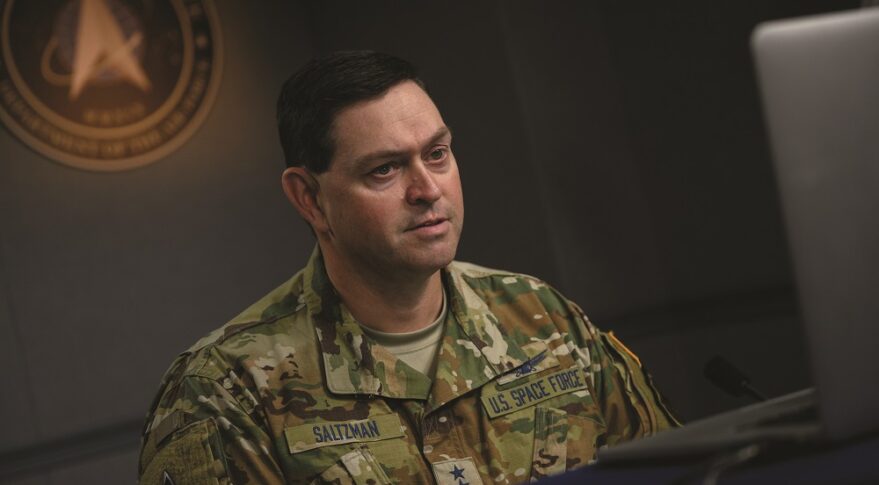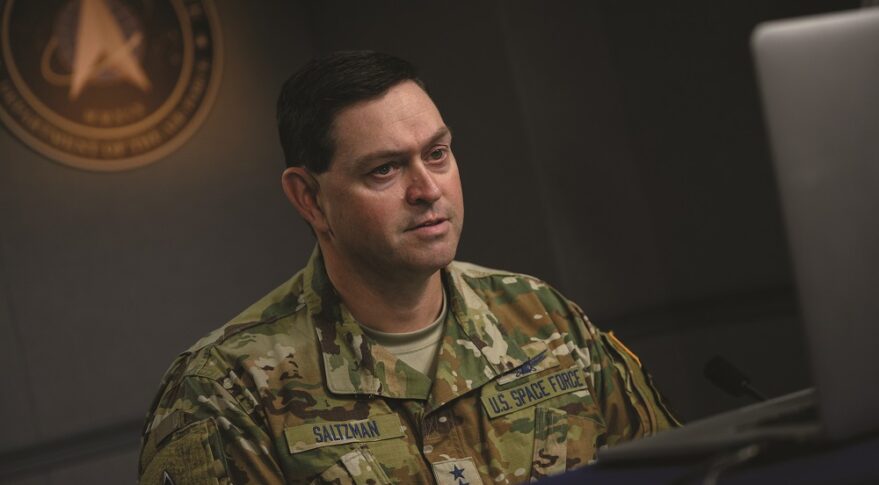
On National Security | Tough to-do list for new Space Force boss (Image Credit: Space News)

The first chief of the U.S. Space Force, Gen. John “Jay” Raymond, is preparing to hand over the reins of the newest military branch to his successor Gen. B. Chance Saltzman.
Under Raymond, the Space Force built a solid organizational foundation and has gained institutional support. In a recent speech, Raymond said more people want to join the service than slots available.
The Space Force also has taken actions to deal with growing security risks to space systems, beefing up its cybersecurity and intelligence specialists ranks.
Meanwhile, other initiatives haven’t progressed as Raymond and others had hoped, including efforts to accelerate procurements of next-generation systems and develop a modern training infrastructure for satellite operators.
In a 2020 speech, Raymond noted that “on-orbit capabilities move at speeds greater than 17,500 miles per hour. To plan for warfare at these speeds and distances, we must be lean, agile and fast.”
Two years later, the verdict from the Space Force’s procurement chief Frank Calvelli is that major space acquisitions are anything but fast. At an industry conference Sept. 20, he questioned why the service continues to buy what he called Battlestar Galacticas.
Calvelli was especially critical of the geosynchronous infrared satellites that provide early warning of ballistic missile launches. Three such satellites, known as the Next-Generation Overhead Persistent Infrared (Next-Gen OPIR), are being developed by Lockheed Martin at a cost of $7.8 billion.
The previous missile-warning satellites, known as SBIRS, were criticized in 2017 by top general John Hyten for being “juicy targets” for enemy anti-satellite weapons. That led the Air Force to cancel SBIRS in 2018 and start Next-gen OPIR, a program touted as a model of faster acquisition. The Air Force sought special authorities to reduce to five years a development cycle that would have typically taken nine years.
Now the program’s schedule appears to be slipping, according to the Government Accountability Office, which warned in a report that Next Gen OPIR is unlikely to meet the current 2025 target launch date and is at high risk of delays due to its technical complexity.
Calvelli wants to shift to constellations of smaller and cheaper satellites in low Earth orbit, like the missile-tracking layer that the Space Development Agency plans to start fielding in 2024 at a cost of $1.4 billion for 28 satellites.
The shift to a proliferated LEO system, however, was not initiated by the Space Force. SDA was established in 2019 under the Office of the Secretary of Defense. Per congressional mandate, the agency this month will become part of the Space Force and will report directly to Calvelli.
SDA Director Derek Tournear said Next-Gen OPIR would be the last GEO missile-warning satellites to be acquired by DoD. “The future will all be proliferated LEO,” plus a layer of medium-orbit satellites to add resiliency.
Another area where the Space Force has lagged is providing modern training tools for satellite operators. Saltzman acknowledged that much in testimony to the Senate Armed Services Committee.
“Because we have operated in a relatively benign space environment for decades, we have not fielded a sufficient test and training infrastructure that allows our guardians to prepare properly for a contested space domain,” he said.
To train for space warfare, operators require a mix of live and virtual training ranges, said Maj. Gen. Shawn Bratton, commander of the Space Training and Readiness Command.
Guardians need to practice electronic warfare, operations against GPS jamming and how to maneuver satellites “in challenging scenarios,” said Bratton. Most of the training infrastructure was inherited from the Air Force, and it’s up to the Space Force to invest in updated capabilities.
Currently, only graduates of the Air Force Academy’s FalconSat program learn how to fly satellites before they are assigned to an operational unit, Bratton noted. Everyone else has to acquire those skills on the job. “There’s a burden on the operational unit to build up operators. We need to provide more training.”
As the new Space Force boss settles in, many will be watching what he does to fix troubled acquisitions and provide adequate training for the complex space environment.
Sandra Erwin covers military space for SpaceNews. She is a veteran national security journalist and former editor of National Defense magazine.
“On National Security” appears in every issue of SpaceNews magazine. This column ran in the October 2022 issue.









